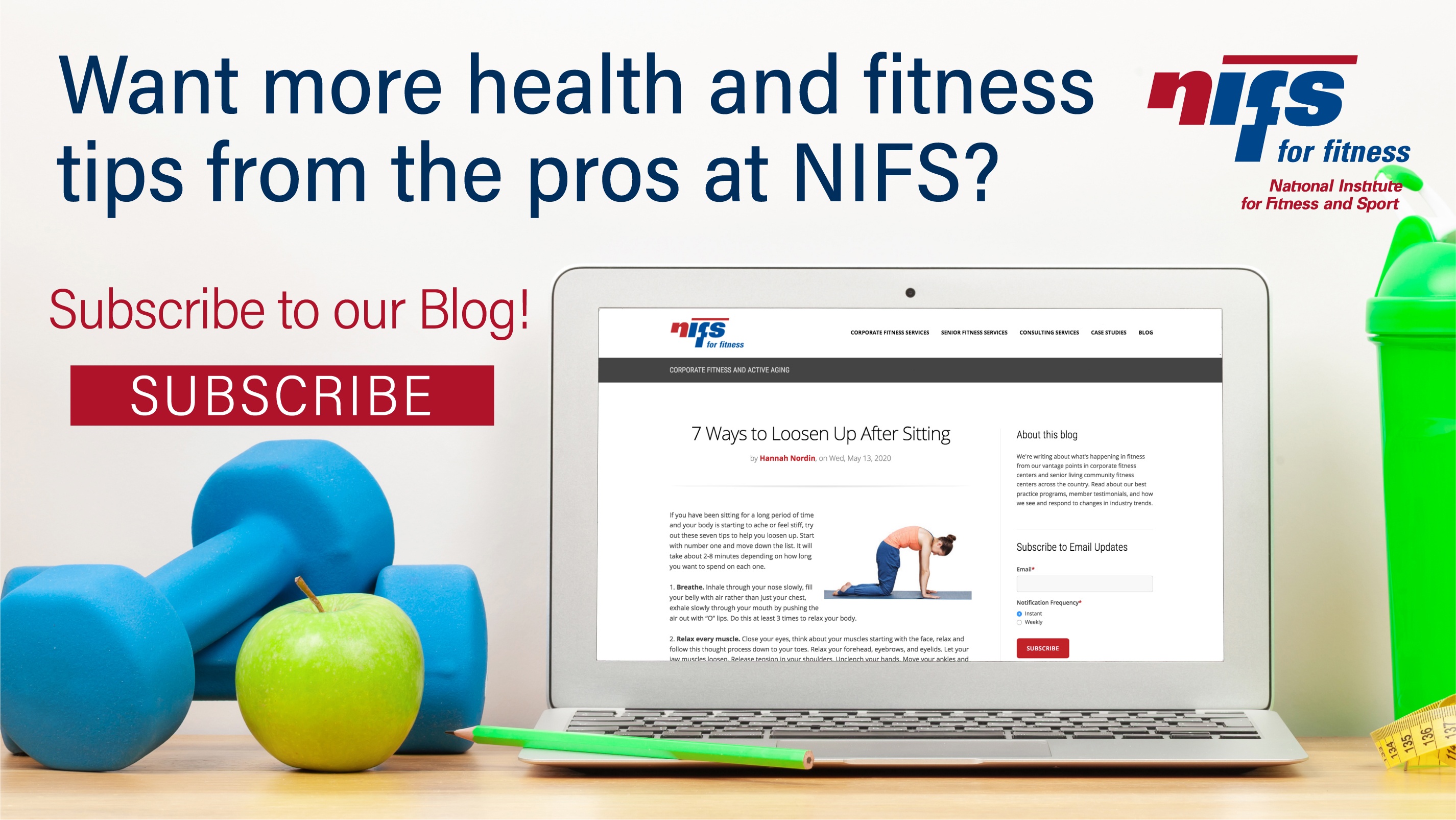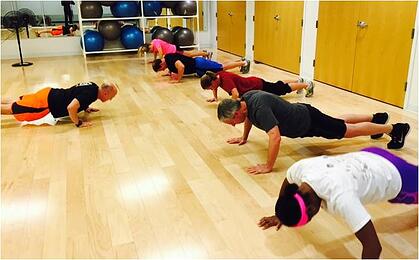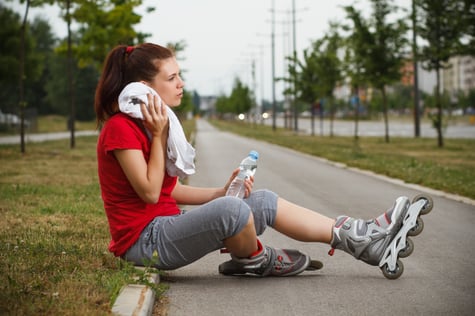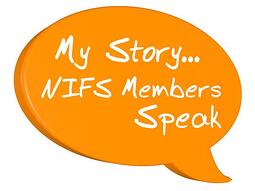.jpg?width=413&height=246&name=GettyImages-1392938623%20(1).jpg) Striving to achieve 10,000 steps a day is a great way to move your body more and improve your overall health. Don't let the thought of 10,000 steps hinder you from trying. Start small and work your way to 10K a day this month!
Striving to achieve 10,000 steps a day is a great way to move your body more and improve your overall health. Don't let the thought of 10,000 steps hinder you from trying. Start small and work your way to 10K a day this month!
10 Tips for Walking 10,000 Steps a Day:
1. Get a pedometer or fitness tracker: Wearable devices like Fitbit, Apple Watch, or smartphone apps can help you track your daily steps. These tools can motivate you to reach your goal and provide real-time feedback on your progress.
2. Start small: If you're not used to being active, begin with a lower step count and gradually work your way up to 10,000 steps a day. Set achievable milestones, such as adding 1,000 steps per week until you reach your goal. Try breaking up your activity into manageable chunks throughout the day.
3. Find a walking buddy: Walking with a friend, family member or co-worker can make the activity more enjoyable and help you stay motivated. You can encourage each other to reach your step goals.
4. Make it part of your routine: Incorporate walking into your day. For example, use the stairs instead of the elevator, park farther away from your destination, or take a walk around your neighborhood after dinner.
5. Set reminders: Use alarms or notifications on your phone or fitness tracker to remind you to get up and move throughout the day. This can be particularly helpful if you have a sedentary job. Consider scheduling it into your workday or even ask your team if they would like to have a walking meeting.
6. Choose scenic routes: Walking in pleasant surroundings can make the experience more enjoyable. Explore parks, nature trails, or other scenic areas in your community.
7. Mix it up: Vary your walking routine to avoid boredom. Try different routes, paces, or include some uphill terrain. You can also listen to music, podcasts, or audiobooks to make the time pass more quickly.
8. Track your progress: Each day log your daily step count and review your achievements regularly. Celebrate your milestones to stay motivated.
9. Stay consistent: Consistency is key to achieving and maintaining your 10,000-step goal. Make walking a habit and prioritize it in your daily life.
10. Adjust your goal as needed: Your schedule and fitness level differ from the next person. If 10,000 steps a day feels unattainable or too easy, adjust accordingly to suit your needs.
Your main goal is to be active daily and make it a daily habit. While 10,000 steps is a common goal, any increase in daily activity can have significant health benefits. What is your favorite app or fitness device for tracking steps?


.jpg?width=458&height=305&name=GettyImages-805085582%20(1).jpg) What Makes Cycle So Great?
What Makes Cycle So Great? In corporate fitness we find that members love a good team challenge. Whether that's creating teams of 4-5 people to work toward a goal or all coming together to reach a finish line. Our popular 500 Challenge is back, and employees are revving up those tennis shoes to clock miles this next month! We know the benefits of moving more each day with be achieved, but the fun in building community is just as beneficial. Join us and rev up your body and get moving this month!! Go big and strive to hit 100 miles in one month. Feeling intimidated by the big number? Look no further, here are a few tips and tricks to accomplish the feat!
In corporate fitness we find that members love a good team challenge. Whether that's creating teams of 4-5 people to work toward a goal or all coming together to reach a finish line. Our popular 500 Challenge is back, and employees are revving up those tennis shoes to clock miles this next month! We know the benefits of moving more each day with be achieved, but the fun in building community is just as beneficial. Join us and rev up your body and get moving this month!! Go big and strive to hit 100 miles in one month. Feeling intimidated by the big number? Look no further, here are a few tips and tricks to accomplish the feat!.jpg?width=396&height=264&name=GettyImages-1354842116%20(1).jpg) The NIFS staff often find that employees will take time away from their desk to exercise, enjoy conversation that isn't work related, or simply decompress. Our staff are great at putting the FUN into Fitness which often results in laughter during classes, conversations and that sense of community in our client's onsite fitness centers.
The NIFS staff often find that employees will take time away from their desk to exercise, enjoy conversation that isn't work related, or simply decompress. Our staff are great at putting the FUN into Fitness which often results in laughter during classes, conversations and that sense of community in our client's onsite fitness centers.
.jpg?width=486&name=winter%20exercise%20GettyImages-1048608792%20(1).jpg) When winter blows in and the days start to get shorter and colder, you can pull the blankets over your head and hibernate—or you can suit up and head outside for an outdoor winter adventure. Exercising in colder weather has distinct advantages over working out in warmer weather, so there is no reason to take a break when the temperatures drop. There are a number of advantages to working out in colder weather that most people disregard.
When winter blows in and the days start to get shorter and colder, you can pull the blankets over your head and hibernate—or you can suit up and head outside for an outdoor winter adventure. Exercising in colder weather has distinct advantages over working out in warmer weather, so there is no reason to take a break when the temperatures drop. There are a number of advantages to working out in colder weather that most people disregard.
 The benefits of providing an onsite corporate fitness center at the workplace are far-reaching and they may or may not have anything to do with reducing health care costs. For leadership, it’s easy to focus on this tangible measurement and lose sight of other reasons to support employees in their health and fitness goals.
The benefits of providing an onsite corporate fitness center at the workplace are far-reaching and they may or may not have anything to do with reducing health care costs. For leadership, it’s easy to focus on this tangible measurement and lose sight of other reasons to support employees in their health and fitness goals.




 NIFS isn't the only agency that provides fitness management expertise to businesses. There are several like us because the market demands it. While many organizations have adopted a DIY attitude about managing their own fitness programs, an additional (and substantial) set of businesses has recognized the value in outsourcing fitness center management for their corporate fitness center or in their senior living community.
NIFS isn't the only agency that provides fitness management expertise to businesses. There are several like us because the market demands it. While many organizations have adopted a DIY attitude about managing their own fitness programs, an additional (and substantial) set of businesses has recognized the value in outsourcing fitness center management for their corporate fitness center or in their senior living community.
 According to a study published in the
According to a study published in the 
 Mandy Kisamore was a little reserved when we first met. She is not a jump in the front of the room type of person. She came to a few classes and then became more of a regular. After a while she started to hang around after class and ask questions that began with her and then shifted toward her children, and her family. She has done a lot of work from when she started and it hasn’t stopped with her. Check out her story about how she transformed herself and her family. It has been extremely rewarding to be able to be a part of Mandy’s success.
Mandy Kisamore was a little reserved when we first met. She is not a jump in the front of the room type of person. She came to a few classes and then became more of a regular. After a while she started to hang around after class and ask questions that began with her and then shifted toward her children, and her family. She has done a lot of work from when she started and it hasn’t stopped with her. Check out her story about how she transformed herself and her family. It has been extremely rewarding to be able to be a part of Mandy’s success. 
